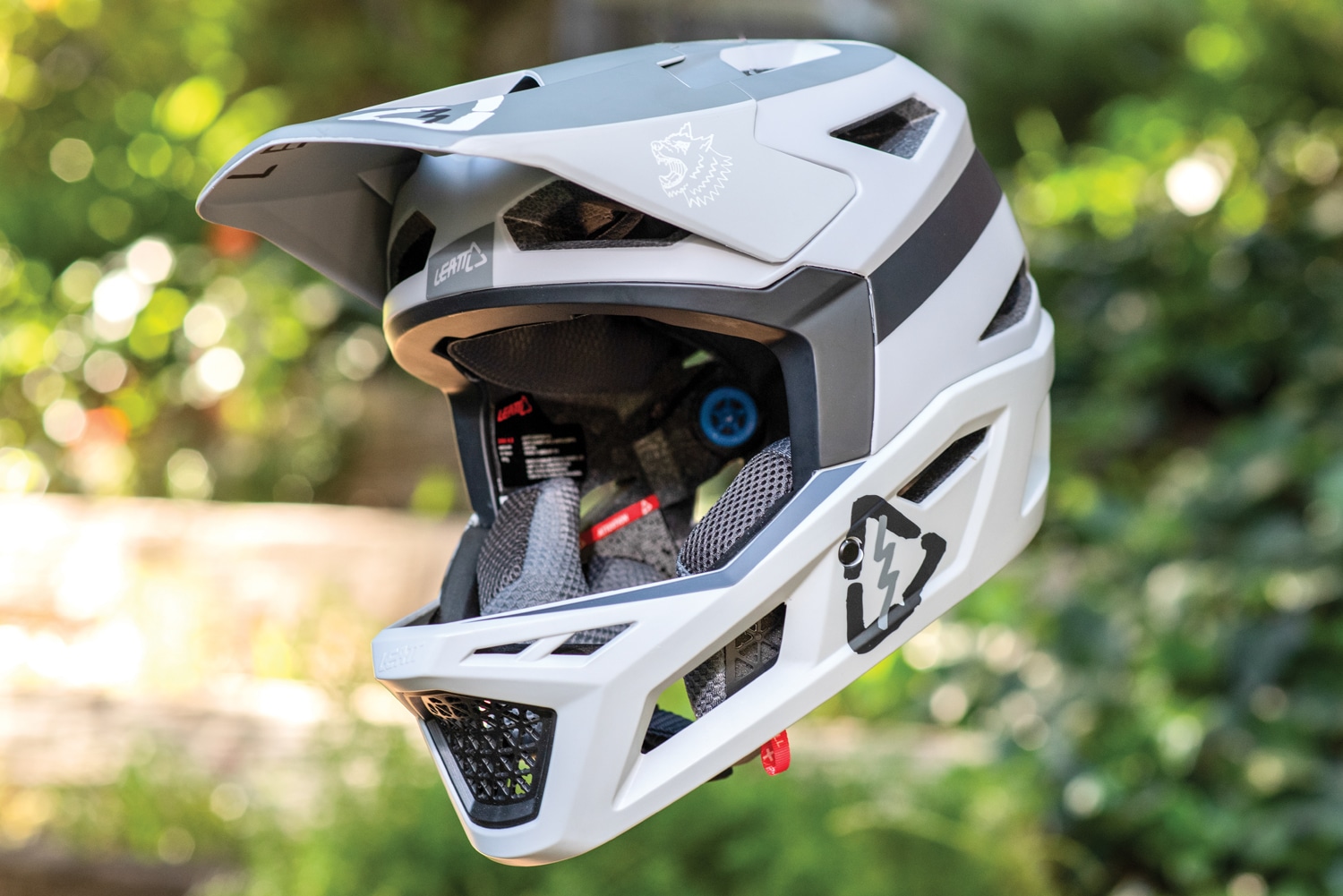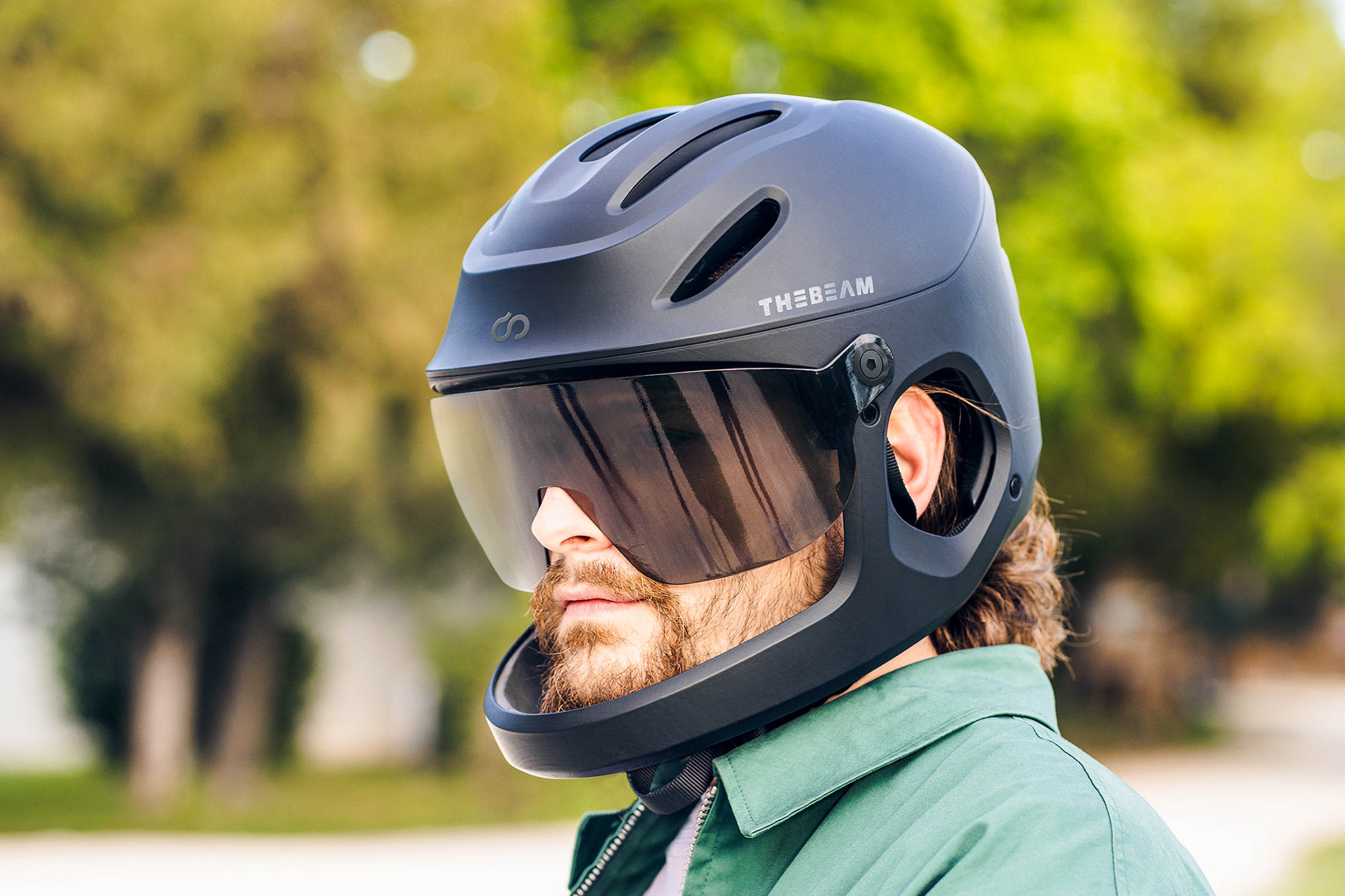How to Choose the Right Full Face Helmet for Your Riding Style
Choosing the right full face helmet for your riding style is crucial to ensure a safe and enjoyable cycling experience. Different types of cycling, such as road cycling, mountain biking, and commuting, require different features and considerations in a full face helmet.
For road cycling, look for a helmet with a sleek and aerodynamic design to reduce wind resistance and improve speed. Helmets with MIPS technology, such as the Bell Zephyr, are also a good choice for road cycling as they provide additional protection against rotational forces.
For mountain biking, a full face helmet with a more robust design and better ventilation is recommended. Helmets like the Fox Racing Proframe offer excellent protection and visibility, making them ideal for mountain biking.
For commuting, a helmet with a more casual and stylish design may be preferred. Helmets like the Giro Switchblade offer a great balance of style, comfort, and protection, making them suitable for daily commutes.
When choosing a full face helmet, consider the type of riding you will be doing most often and look for features that cater to that style. Additionally, consider the fit, comfort, and visibility of the helmet to ensure a safe and enjoyable ride.
Key Features to Look for in a Full Face Helmet
When shopping for a bike full face helmet, there are several key features to look for to ensure you get a helmet that meets your needs and provides optimal protection. One of the most important features to consider is ventilation. A well-ventilated helmet can help keep you cool and comfortable during long rides, while also reducing the risk of fogging and moisture buildup.
Weight is another important consideration when choosing a full face helmet. Lighter helmets can be more comfortable to wear and can reduce fatigue on long rides. However, it’s also important to ensure that the helmet is not too light, as this can compromise its protective capabilities.
Visibility is also a critical feature to consider when choosing a full face helmet. A helmet with good visibility can help you see the road and surroundings more clearly, reducing the risk of accidents and improving your overall riding experience.
Certification from reputable organizations such as the Consumer Product Safety Commission (CPSC) and the Snell Memorial Foundation is also essential when choosing a full face helmet. These organizations test helmets for safety and performance, and their certification ensures that the helmet meets certain standards for protection and quality.
Other features to consider when choosing a full face helmet include the type of padding and liner used, the adjustability of the fit system, and the presence of features such as MIPS technology. By considering these key features, you can find a bike full face helmet that provides optimal protection, comfort, and performance.
Top Picks: The Best Full Face Helmets for Road Cycling and Mountain Biking
When it comes to choosing the best full face helmet for road cycling or mountain biking, there are several top-rated options to consider. For road cycling, the Giro Switchblade is a popular choice among cyclists. This helmet features a sleek and aerodynamic design, with a lightweight and breathable construction that provides excellent ventilation and comfort.
Another top pick for road cycling is the Troy Lee Designs A2. This helmet features a unique design with a focus on aerodynamics and ventilation, making it ideal for high-speed riding. The A2 also features a MIPS liner, which provides additional protection against rotational forces.
For mountain biking, the Bell Zephyr is a top-rated option. This helmet features a robust design with a focus on protection and durability, making it ideal for rugged terrain and high-impact riding. The Zephyr also features a MIPS liner and a adjustable visor, which provides excellent visibility and protection from the elements.
Another top pick for mountain biking is the Fox Racing Proframe. This helmet features a lightweight and breathable construction, with a focus on ventilation and comfort. The Proframe also features a MIPS liner and a adjustable visor, making it ideal for high-speed and technical riding.
When choosing a full face helmet, it’s essential to consider factors such as fit, comfort, and protection. Look for a helmet that meets your specific needs and riding style, and don’t compromise on safety and quality.
The Benefits of Customizable Full Face Helmets
Customizable full face helmets offer a range of benefits for cyclists, including the ability to personalize fit, style, and protection. By choosing a helmet that can be tailored to individual preferences, cyclists can ensure a comfortable and secure fit, which is essential for optimal performance and safety.
One of the main advantages of customizable full face helmets is the ability to adjust the fit to suit individual head shapes and sizes. This can be particularly beneficial for cyclists with unique head shapes or those who have difficulty finding a helmet that fits comfortably. By adjusting the fit, cyclists can ensure that their helmet stays securely in place, even during high-speed or high-impact riding.
Customizable full face helmets also offer a range of style options, allowing cyclists to personalize their helmet to suit their individual preferences. This can include choosing from a range of colors, designs, and graphics, as well as adding custom logos or decals. By personalizing their helmet, cyclists can express their individuality and showcase their personality.
Brands such as Specialized offer customization options for their full face helmets, including the Ambush Comp. This helmet features a range of adjustable components, including the fit system, visor, and pads, allowing cyclists to tailor the helmet to their individual needs. Additionally, the Ambush Comp is available in a range of colors and designs, allowing cyclists to personalize their helmet to suit their style.
Other benefits of customizable full face helmets include improved protection and performance. By choosing a helmet that can be tailored to individual needs, cyclists can ensure that they have optimal protection and performance, which is essential for safe and enjoyable riding.
Full Face Helmet Safety Standards: What You Need to Know
When it comes to choosing a full face helmet, safety standards are a crucial consideration. In the United States, the Consumer Product Safety Commission (CPSC) is responsible for setting safety standards for bike helmets, including full face helmets. The CPSC standard requires that helmets meet certain criteria for impact protection, penetration resistance, and retention system strength.
In addition to the CPSC standard, the Snell Memorial Foundation is a non-profit organization that tests and certifies helmets for safety. The Snell standard is considered to be more stringent than the CPSC standard, and helmets that meet the Snell standard are considered to be among the safest available.
The ASTM (American Society for Testing and Materials) standard is another important safety standard for full face helmets. The ASTM standard requires that helmets meet certain criteria for impact protection, penetration resistance, and retention system strength, as well as for visibility and ventilation.
When choosing a full face helmet, it’s essential to look for a helmet that meets one or more of these safety standards. A helmet that meets these standards will provide the best possible protection in the event of a crash or impact.
Some popular full face helmets that meet these safety standards include the Bell Zephyr, the Fox Racing Proframe, and the Giro Switchblade. These helmets are designed to provide excellent protection and comfort, and are a great choice for serious cyclists.
How to Properly Fit and Wear a Full Face Helmet
Properly fitting and wearing a full face helmet is crucial to ensure optimal protection and comfort. A helmet that is not fitted correctly can compromise its protective capabilities, while a helmet that is too tight or too loose can cause discomfort and distraction while riding.
To properly fit a full face helmet, start by adjusting the straps to ensure a snug and comfortable fit. The straps should be adjusted so that the helmet sits level on the head, with the straps forming a “V” shape under the ears. The helmet should also be adjusted to ensure that the visor is at the correct height and angle.
Next, adjust the pads and liners to ensure a comfortable and secure fit. The pads should be adjusted to fit snugly against the head, while the liners should be adjusted to ensure that the helmet is not too tight or too loose.
Finally, check the helmet’s retention system to ensure that it is securely fastened. The retention system should be adjusted to ensure that the helmet stays securely in place, even during high-speed or high-impact riding.
By following these steps, cyclists can ensure that their full face helmet is properly fitted and worn, providing optimal protection and comfort while riding. A properly fitted helmet can also help to reduce the risk of head injuries and improve overall riding performance.
Maintenance and Care: Tips for Extending the Life of Your Full Face Helmet
Proper maintenance and care are essential to extend the life of your full face helmet. Regular cleaning, storage, and inspection can help to prevent damage and wear, ensuring that your helmet remains in good condition and continues to provide optimal protection.
To clean your full face helmet, use a soft cloth and mild soap solution. Avoid using harsh chemicals or abrasive materials that can damage the helmet’s finish or compromise its protective capabilities. Rinse the helmet thoroughly and allow it to air dry.
When storing your full face helmet, make sure to keep it in a cool, dry place away from direct sunlight. Avoid storing the helmet in a hot or humid environment, as this can cause the materials to degrade or become brittle.
Regular inspection is also crucial to ensure that your full face helmet remains in good condition. Check the helmet for any signs of damage or wear, including cracks, dents, or scratches. Also, check the straps and buckles for any signs of wear or damage, and replace them if necessary.
By following these tips, you can help to extend the life of your full face helmet and ensure that it continues to provide optimal protection and performance. Remember to always check your helmet regularly and replace it if necessary to ensure your safety on the road or trail.
Maintenance and Care: Tips for Extending the Life of Your Full Face Helmet
Regular maintenance and care are essential to extend the life of your full face helmet. By following these tips, you can ensure that your helmet remains in good condition and continues to provide optimal protection.
Cleaning: Use a soft cloth and mild soap solution to clean your full face helmet. Avoid using harsh chemicals or abrasive materials that can damage the helmet’s finish or compromise its protective capabilities.
Storage: Store your full face helmet in a cool, dry place away from direct sunlight. Avoid storing the helmet in a hot or humid environment, as this can cause the materials to degrade or become brittle.
Inspection: Regularly inspect your full face helmet for any signs of damage or wear, including cracks, dents, or scratches. Also, check the straps and buckles for any signs of wear or damage, and replace them if necessary.
By following these tips, you can help to extend the life of your full face helmet and ensure that it continues to provide optimal protection and performance. Remember to always check your helmet regularly and replace it if necessary to ensure your safety on the road or trail.







